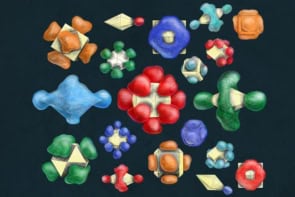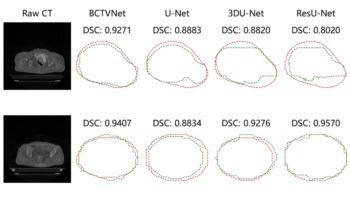Physicists in the US have created nanoelectromechanical system (NEMS) resonators that achieve self-detectable mechanical resonance at frequencies greater than 1.3 GHz. Based on a carbon nanotube (CNT) structure, the devices can operate at room temperature and in air at atmospheric pressure.
When taken together, these features are described as a “Holy Grail” of NEMS resonator performance (Phys.Rev.Lett 97 087203). Previous CNT resonators were limited to 200 MHz and could not operate at atmospheric pressure.
Created by Alex Zettl and colleagues at the University of California, Berkeley and the Lawrence Berkeley National Laboratory, the NEMS also proved to be very sensitive mass detectors with 10-18g (attogram) resolution. The measurement of mass at the attogram scale was first demonstrated in 2004 by Harold Craighead and colleagues at Cornell University. Craighead used laser techniques to observe the changes in the resonant frequency of a NEMS cantilever.
While the Berkeley researchers have not achieved better mass resolution, their system employs electrical self detection and does not require the use of a laser. This could make the design more appropriate for the development of highly sensitive chemical and biological sensors.
According to Nickolay Lavrik, a nanotechnology and sensor specialist at Oak Ridge National Laboratory in the US, the Berkeley resonators represent an important step towards the development of these sensors. Lavrik told PhysicsWeb that CNTs show great promise for the development of ultra sensitive mass detectors because they can be self-assembled into very small structures down to the molecular scale. Indeed, Lavrik believes that CNTs have a good chance at achieving another Holy Grail of mass detection, zeptogram (10-21g) sensitivity.
The Berkeley resonators comprised a CNT clamped between source and drain electrodes on a silicon substate. The midsection of the nanotube is free to vibrate above a trench containing a gate electrode. The gap between the source and drain was 300-1000 nm and the gap between the CNT and the gate was 200-500 nm.
The resonator is actuated by applying an RF signal at the gate. A carrier signal (which is a slightly different frequency than the actuation signal) is applied at the drain and the source is monitored using a lock-in amplifier. The CNTs were operated both bare and after being coated with metals such as indium. The researchers we also able to determine the quantity and mobility of excess charge that can build up on the CNT by employing two different methods for measuring the resonant properties of the NEMS.



